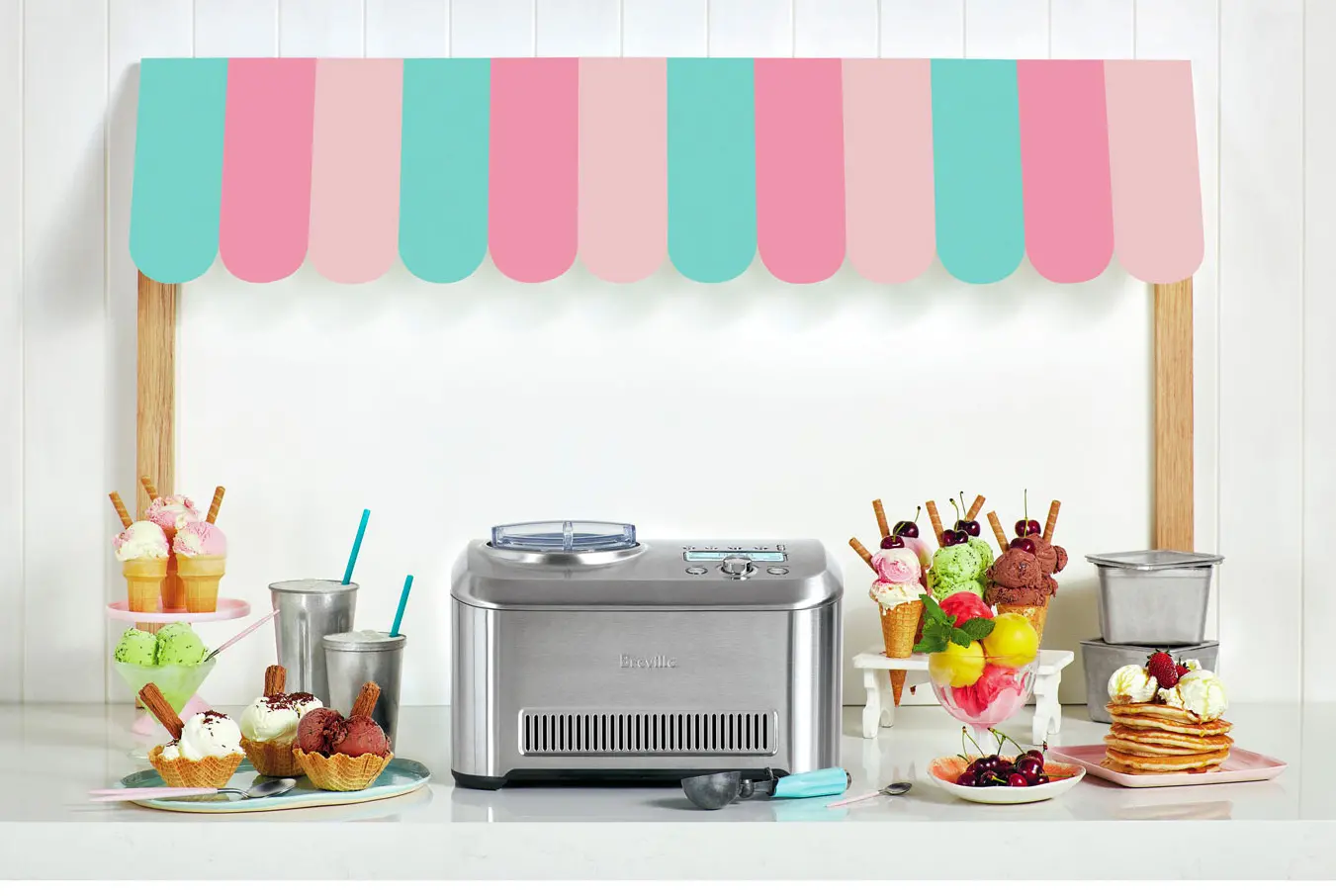
Frozen desserts are a staple in culinary traditions around the world. Among the most popular are ice cream, gelato, frozen yogurt, and sorbet. Though they might seem similar, each one has distinct characteristics that set it apart. A common element in making these treats at home is the ice cream maker, a versatile tool that simplifies the process.
Ice cream, gelato, frozen yogurt, and sorbet are all delightful frozen treats, but they differ in key ways. Ice cream is known for its creamy, rich texture and high-fat content, often made with a base of cream and sugar. Gelato, while similar, contains less fat, is churned at a slower speed, and tends to have a denser, more flavourful profile. Frozen yogurt, made with yogurt instead of cream, offers a tangy flavour and generally has fewer calories, making it a lighter option. Sorbet is unique in being a dairy-free alternative, usually created with fruit puree, sweeteners, and water or juice, offering a refreshing and fruity taste. These differences in ingredients, churning process, and flavour profiles set each of these frozen desserts apart, allowing for diverse culinary experiences.
Ice cream: the classic indulgence
Ice cream is perhaps the most recognizable frozen treat. Made primarily of cream, sugar, and flavourings, it’s known for its rich, creamy texture. An ice cream maker can churn the mixture, incorporating air and preventing large ice crystals from forming, resulting in a smooth consistency.
Making ice cream with an ice cream maker involves the following steps:
- Preparing the base mixture with desired flavours.
- Chilling the mixture thoroughly.
- Pouring the mixture into the ice cream maker.
- Churning until it reaches the desired texture.
Gelato: Italy’s creamy delight
Gelato, though similar to ice cream, has some unique features. It typically contains less fat and has a denser texture. Unlike ice cream, gelato is churned at a slower speed, incorporating less air. The result is a rich and flavourful dessert.
To make gelato using an ice cream maker:
- Create a base with milk instead of cream to reduce fat content.
- Add flavours and sweeteners, considering the density and texture.
- Chill and churn in the ice cream maker at a slower speed than for ice cream.
- Serve slightly warmer than ice cream for the perfect consistency.
Frozen yogurt: a lighter alternative
Frozen yogurt is a popular choice for those seeking a lighter alternative to ice cream. Made with yogurt instead of cream, it offers a tangy flavour profile and usually contains fewer calories.
Making frozen yogurt with an ice cream maker is simple:
- Mix yogurt with sweeteners and flavourings as desired.
- Chill the mixture.
- Churn in the ice cream maker until reaching the preferred texture.
- Serve immediately or freeze for later use.
Sorbet: the dairy-free option
Sorbet stands out as a dairy-free option among frozen treats. Often fruit-based, it’s a refreshing and flavourful choice, especially for those with dietary restrictions.
Making sorbet with an ice cream maker:
- Blend fruit with sweeteners and water or juice to create a puree.
- Chill the mixture.
- Churn in the ice cream maker until smooth.
- Freeze until ready to serve.
Choosing the right ice cream maker

With different frozen desserts in mind, selecting the right ice cream maker becomes essential. From manual to automatic options, considerations such as capacity, churning speed, and versatility play a role in the decision-making process. Ensure the chosen machine meets your needs for crafting various treats.
Creative recipes and tips
Making frozen treats at home is not just about following standard recipes; it’s a chance to explore creativity and personal taste. Whether you’re crafting ice cream, gelato, frozen yogurt, or sorbet, variations in flavours, mix-ins, and presentation can transform a simple dessert into a culinary masterpiece. Experimenting with herbs, spices, or exotic fruits can elevate the flavour profiles. The artful use of garnishes, sauces, or unique serving dishes can turn a dessert into a visual feast. Remember, the only limit is your imagination, so don’t hesitate to try new ideas and embrace the joy of creative cooking with your ice cream maker.
The cultural impact of frozen desserts
Frozen desserts have left an indelible mark on culinary traditions around the world. The origins of gelato can be traced back to Italy, where it has been a symbol of artisan craftsmanship. Ice cream’s popularity spread across continents, evolving to reflect different cultures and tastes. In contrast, sorbet has often been seen as a refreshing palate cleanser, transcending culinary boundaries with its simple, fruit-based appeal. Frozen yogurt’s rise as a health-conscious alternative has also shaped modern dining trends. Together, these desserts tell a story of innovation, indulgence, and cultural diversity, each playing a unique role in the global culinary landscape.

Understanding the differences between ice cream, gelato, frozen yogurt, and sorbet opens doors to culinary exploration. With an ice cream maker and a bit of creativity, crafting these delectable delights at home becomes a joyous adventure. Embrace the process, experiment with flavours, and most importantly, enjoy the delicious results.
This article was drafted using AI technology and then reviewed, fact-checked, and revised by a member of our editorial team.





